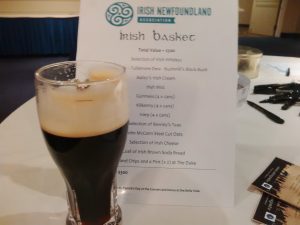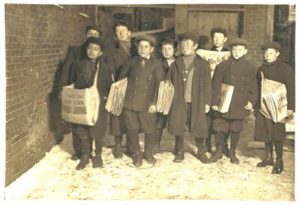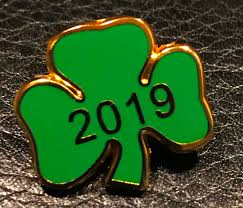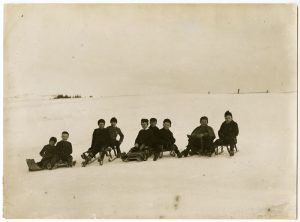ARCHIVAL MOMENT
“… we do not feel that you in Newfoundland have ever been strangers… “
March 31, 1949
 The act creating the new Canadian province of Newfoundland (now Newfoundland and Labrador) came into force just before midnight on March 31, 1949, ceremonies marking the occasion did not take place until April 1.
The act creating the new Canadian province of Newfoundland (now Newfoundland and Labrador) came into force just before midnight on March 31, 1949, ceremonies marking the occasion did not take place until April 1.
The British Parliament passed the necessary legislation on 23 March, and the Terms of Union came into effect “immediately before the expiration of the thirty-first day of March 1949” (Term 50).
In Newfoundland, official events were concentrated in St. John’s. There was a brief swearing-in ceremony at Government House for the new lieutenant-governor, Sir Albert Walsh, who then accepted a Canadian citizenship certificate on behalf of all Newfoundlanders. Those present at the ceremony listened to a broadcast of the ceremonies in Ottawa before attending a reception. Later in the day, Walsh swore in the first members of the interim government. Despite the fierce contest that had led to this point, the day passed very quietly, with little demonstration either for or against Confederation.
The official ceremonies at Ottawa took place on Parliament Hill. The Peace Tower carillon began by playing “Squid Jigging Ground,” a traditional Newfoundland song. Official speeches then followed, coming from Prime Minister St. Laurent and F. Gordon Bradley. The Prime Minster said:
“In greeting you as fellow citizens we do not feel that you in Newfoundland have ever been strangers. In peace we have been happy to live and work beside you. In two wars we have been glad you were in our company and we in yours. We have the same traditions and the same way of life… He continued … During the centuries since the original settlement of Newfoundland, the people of your island have met the forces of nature, on sea and on land. In adversity and in prosperity they have developed qualities of heart and spirit for which they are renowned.”
F. Gordon Bradley, chosen to act as the new province’s first representative in the federal government; said to those gathered:
“… This is a day which will live long in North American history. It is a day of fulfilment – fulfilment of a vision of great men who planned the nation of Canada more than eighty years ago …. I fancy we see them now, bending over this scene in silent and profound approval …. Thus we begin life as one people in an atmosphere of unity. We are all Canadians now ….
Joseph R. Smallwood would become the first premier.
St. Laurent then made the first few cuts into a blank escutcheon that had been reserved for Newfoundland’s coat of arms since the reconstruction of the Centre Block after the fire of 1916.
After a speech from the Governor General, events concluded with the singing of “God Save the King,” “Ode to Newfoundland,” and “O Canada.” As events were broadcast via radio, people from Newfoundland were able to listen in.
Recommended Archival Collection: At The Rooms Provincial Archives Division explore GN 154 a collection that consists of minutes of the delegations 41 meetings in St. John’s; letters to the Chairman and the Secretary of the Newfoundland Delegation to Ottawa from societies, business firms, Labour unions, etc. regarding the effect of Confederation on various organizations.
Recommended Exhibit: Here, We Made a Home. The Elinor Gill Ratcliffe Gallery – Level 4. The Rooms. Come over to the Rooms and find Joey Smallwood’s glasses and bowtie.
Did you know that the Newfoundland and Labrador official version of – The Terms of Union with Canada are held in The Rooms.












